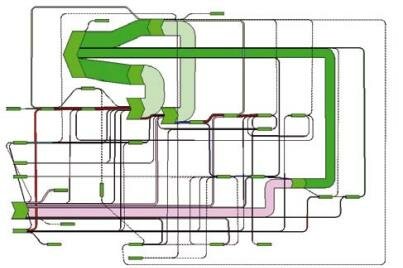An energy efficiency study provides valuable data for the optimisation of plants.
VTU Engineering performed an extensive analysis on behalf of Borealis Polymere GmbH at the Burghausen location, and in the process defined important measures for future energy and cost savings.At that location, Borealis operates two plants for the production of polypropylene and polyethylene. It expanded polypropylene production in 2008 to include plant PP6. There, the company's own Borstar® technology is used to produce 330,000 tons of polypropylene annually for the European market. The plastic granulate that is produced is then processed into fibres, films, hollow parts or semi-finished products for business customers. The new capacity was mainly added to the area of cast film and blown film applications and hence used for food, household, transport and medical packaging, cleaning agent and cosmetic bottles, as well as fibres for hygienic applications.
On behalf of Borealis Polymere GmbH, VTU Engineering conducted an energy efficiency study of the new PP6 plant. During the course of the analysis, the entire energy flows of the main energy sources, i.e. electricity, steam, cooling water, cooling tower water and glycol water were recorded and assigned to the individual aggregates. The result of this was an energy-flow diagram, or more precisely a Sankey diagram, and also composite curves for the ABC analysis of the individual consumers per energy flow. The diagrams represented the actual energetic situation in the one hand, but they also made the shutdown consumption visible. The costs and CO2 equivalents were collected for each energy source, and the consumption and/or savings were converted into Euro and tons of CO2. Based on this, VTU subjected all A and B energy source consumers to an optimisation assessment, and at the same time performed a cost estimate for the investment required for all optimisations. This was done together with Borealis Polymere
The decisive measures were identified and quantified:.
- 5 process-related measures
- 27 electric drives (all > 100 kW)
- 4 electric heaters (all > 25 kW)
- 21 cooling tower water consumers (all > 15 t/h)
- 15 cooling water consumers (all > 10t/h)
- 8 steam consumers (all > 3 % of the total steam consumption)
The results included organisational measures as well as the retrofitting of FUs onto a variety of drives, heat shifts, substitution of energy sources up to changes in procedural steps. Based on this data, it is ultimately possible to develop a strategic approach for implementation of the simple investments and measures, which will pay for themselves quickly, as well as all long-term investments and measures.

